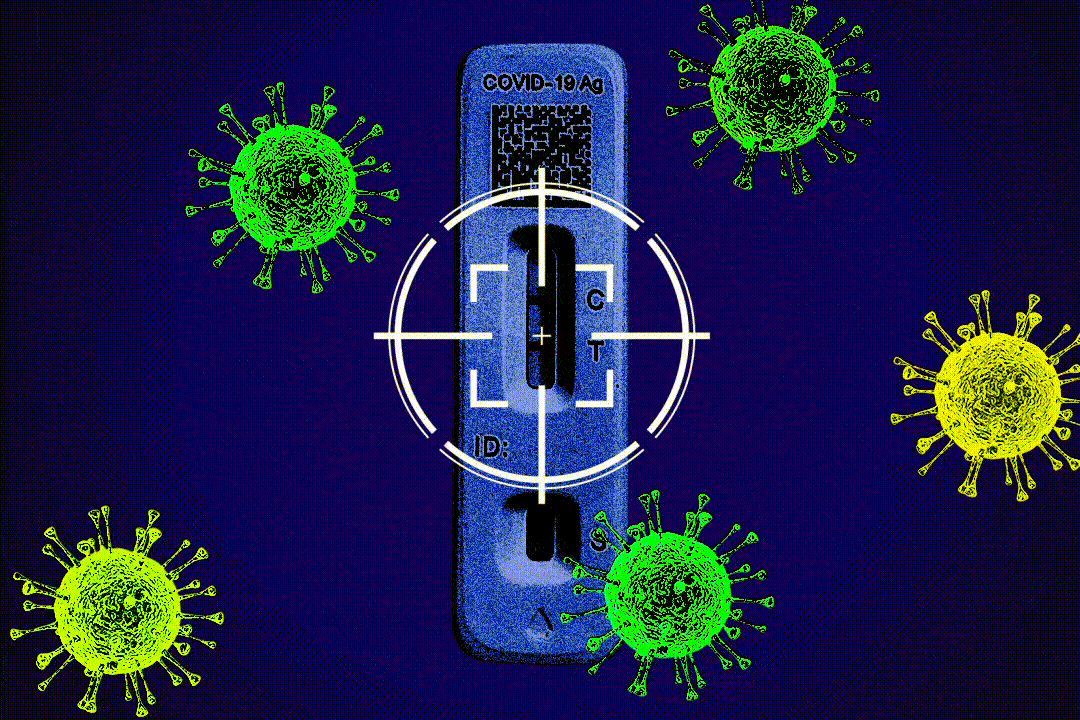Can at-home COVID tests detect new variants Eris and Pirola? Here’s what experts say.

At the beginning of the COVID-19 pandemic, there was no way to know if you had the virus unless you were able to get a PCR test from a medical professional. Tests were scarce and long delays for results made the process of knowing your COVID-19 status difficult. As a result, many welcomed the release of home COVID-19 tests, aka antigen tests.
At the time that these tests were rolled out, many reports listed their accuracy around 80%, with individual brands often citing higher numbers. But a recent study from researchers at Caltech now suggests that home COVID-19 tests are actually only about 44% accurate.
The small study, which was published in June in the journal Microbiology Spectrum, analyzed data from 17 people with COVID-19, tracking when the virus appeared in the throat, saliva and nose, along with how well COVID-19 tests were able to detect the virus.
As a whole, researchers discovered that the virus appeared in the throat or saliva several days before it appeared in the nose, which is the area that most home COVID-19 tests swab. A significant majority of study participants (88%) also had high levels of the virus in their bodies for at least a day before they received a positive antigen test result.
The data showed that home COVID-19 tests aren’t nearly as reliable as many people assume they are, with the researchers noting in the study that tests have “poor observed clinical sensitivity.”
The study results are causing some concern, especially with the rise of new Eris and Pirola COVID-19 variants. What does this mean for home COVID-19 tests — and will they even be accurate against the newest strains of the virus? Here’s what you need to know.
How accurate are COVID-19 tests?
The answer isn't simple. In general, PCR tests (i.e. the tests you have done at doctor's office or a clinic) are considered the gold standard in detecting COVID-19, Dr. Thomas Russo, chief of infectious diseases at the University at Buffalo in New York, tells Yahoo Life. Home tests are a little different.
“When it comes to home tests, it is really important to understand what question you’re asking the test to answer,” Dr. Amesh Adalja, a scholar at the Johns Hopkins Center for Health Security, tells Yahoo Life. “The test is not something that is going to pick up any amount of virus, but higher levels of virus — and needs to be interpreted in that context.”
There are several factors that can affect the accuracy of your test results; these include whether you have symptoms of COVID-19 and how far into your illness you test, Russo says.
If you have symptoms of COVID-19 and your home test is positive, “the likelihood of you having COVID-19 is extraordinarily high,” Russo says. “But if you have symptoms and the test is negative, you shouldn’t be saying, ‘Woo, yes! I don’t have COVID,’” he says. That’s especially true if you were recently exposed to someone with the virus, including a member of your household, Russo says.
Test results can also be less accurate if you don’t have symptoms — if you are, in fact, infected but get a negative test result, it may simply be that levels of the virus weren’t high enough in your nose yet to be detected, Russo says.
The study findings raise questions about a testing hack that circulated on social media in 2021, which recommended swabbing both your nose and throat to get more accurate test results. The Food and Drug Administration later said on X (formerly Twitter) that people should avoid this practice, noting, "Those swabs are for your nose and not your throat."
But the lead author of the study on at-home tests, Alexander Viloria Winnett, a member of the UCLA-Caltech Medical Scientist Training Program, says the latest findings raise questions about whether you'll get more accurate results if you could swab your nose and throat. “Our data suggest that a combination nose-throat swab would lead to better results,” he tells Yahoo Life. “But tests need to be validated for that. We need to make sure that the tests can handle it.”
While home COVID-19 tests are not FDA approved to be used in the throat, Adalja suggests going this route. "It has always been the case that there has been some discordance between throat samples and nasal samples," he says. "Often, I recommended individuals to swab their throat, even if that was not the intended use of the test, to increase the sensitivity."
Can at-home tests even detect these new variants?
Eris (EG.5) and Pirola (BA.2.86) are fairly new. Eris only recently became the most common COVID-19 variant in the U.S., and there are only a few cases of BA.2.86 that have been detected worldwide.
With that, there isn’t much solid data yet on how well at-home COVID-19 tests are picking up these strains. However, experts say the new variants should be detected by home tests.
Both Eris and Pirola have multiple mutations to the spike protein, which is what the virus uses to latch onto your cells, Russo explains. “But home tests are not based on the spike protein — it’s based on the nucleocapsid antigen,” he says. “There are some changes to the nucleocapsid protein [in newer strains], but it’s predicted that the home test should still be able to pick up these new strains.”
Still, Russo says, “one can’t exclude the possibility that, if there are changes, that the sensitivity of the tests may be decreased.”
Overall, Russo recommends that people keep this in mind: “A positive test is meaningful, but a negative test doesn’t mean that you do not have COVID, particularly if you have symptoms.” If you have symptoms of the virus and test negative, he suggests retesting yourself in a day or two or contacting your doctor for a PCR test.
